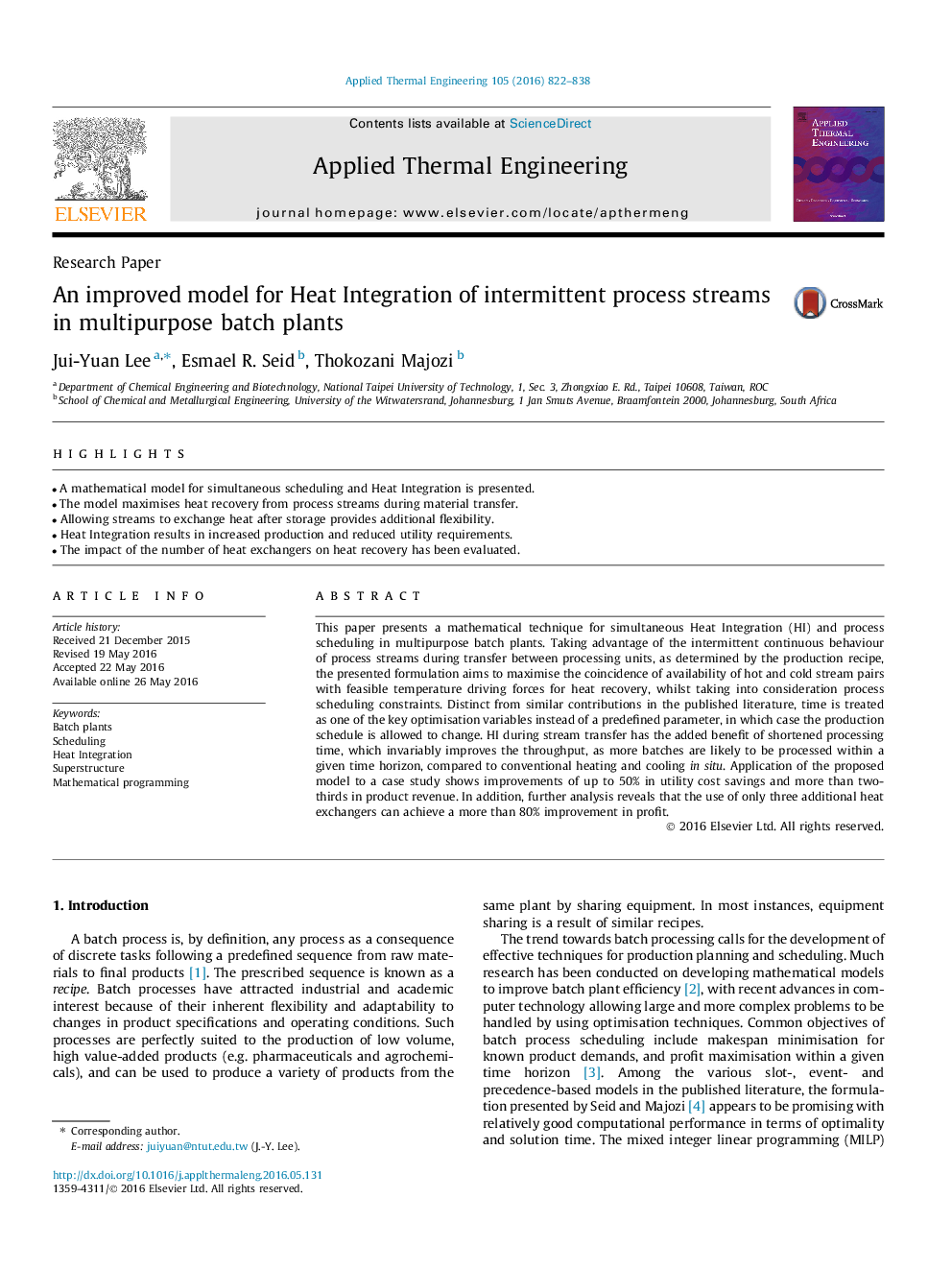| Article ID | Journal | Published Year | Pages | File Type |
|---|---|---|---|---|
| 644634 | Applied Thermal Engineering | 2016 | 17 Pages |
•A mathematical model for simultaneous scheduling and Heat Integration is presented.•The model maximises heat recovery from process streams during material transfer.•Allowing streams to exchange heat after storage provides additional flexibility.•Heat Integration results in increased production and reduced utility requirements.•The impact of the number of heat exchangers on heat recovery has been evaluated.
This paper presents a mathematical technique for simultaneous Heat Integration (HI) and process scheduling in multipurpose batch plants. Taking advantage of the intermittent continuous behaviour of process streams during transfer between processing units, as determined by the production recipe, the presented formulation aims to maximise the coincidence of availability of hot and cold stream pairs with feasible temperature driving forces for heat recovery, whilst taking into consideration process scheduling constraints. Distinct from similar contributions in the published literature, time is treated as one of the key optimisation variables instead of a predefined parameter, in which case the production schedule is allowed to change. HI during stream transfer has the added benefit of shortened processing time, which invariably improves the throughput, as more batches are likely to be processed within a given time horizon, compared to conventional heating and cooling in situ. Application of the proposed model to a case study shows improvements of up to 50% in utility cost savings and more than two-thirds in product revenue. In addition, further analysis reveals that the use of only three additional heat exchangers can achieve a more than 80% improvement in profit.
